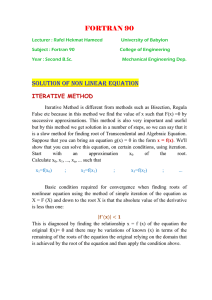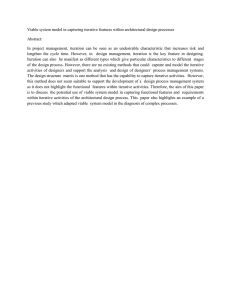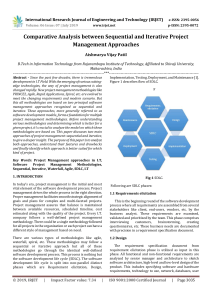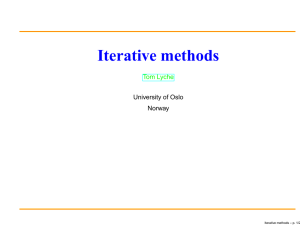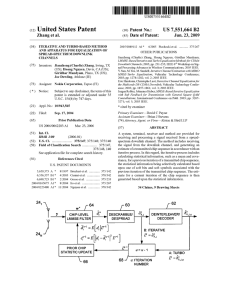¾ ½ ¾ ЎЎЎ Т Ѕ ½ ¾ ЎЎЎ Т Ѕ ½
advertisement
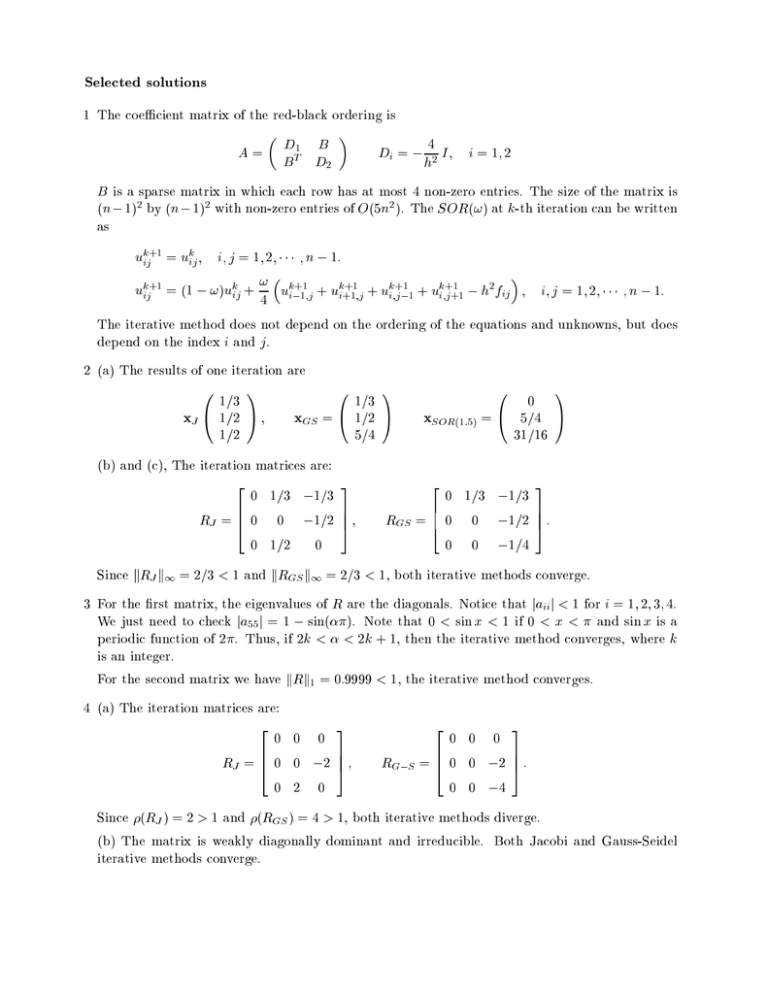
Seleted solutions 1 The oeÆient matrix of the red-blak ordering is A= D1 B B D2 4 D = I; i = 1; 2 h2 i T B is a sparse matrix in whih eah row has at most 4 non-zero entries. The size of the matrix is (n 1)2 by (n 1)2 with non-zero entries of O(5n2 ). The SOR(!) at k-th iteration an be written as i; j = 1; 2; ; n 1: ! +1 u +1 = (1 !)u + u +11 + u +1 +u u k +1 ij =u ; k ij k k ij ij k 4 k i ;j i ;j k +1 i;j 1 +u h2 f k +1 i;j +1 ij ; i; j = 1; 2; ; n 1: The iterative method does not depend on the ordering of the equations and unknowns, but does depend on the index i and j . 2 (a) The results of one iteration are 0 1 1=3 x 1=2 A ; 1=2 x J 0 GS 1 0 1=3 = 1=2 A 5=4 x SOR (b) and (), The iteration matries are: 2 0 1=3 6 R =6 40 0 J 0 1=2 Sine kR k1 = 2=3 < 1 and kR R GS 0 : 2 0 1=3 6 =6 40 0 0 3 7 1=2 7 5: 1=3 1=4 0 k1 = 2=3 < 1, both iterative methods onverge. For the rst matrix, the eigenvalues of R are the diagonals. Notie that ja j < 1 for i = 1; 2; 3; 4. We just need to hek ja j = 1 sin(). Note that 0 < sin x < 1 if 0 < x < and sin x is a J 3 3 7 1=2 7 5; 1=3 1 0 5=4 A (1 5) = 31=16 GS ii 55 periodi funtion of 2. Thus, if 2k < < 2k + 1, then the iterative method onverges, where k is an integer. For the seond matrix we have kRk1 = 0:9999 < 1, the iterative method onverges. 4 (a) The iteration matries are: 2 0 0 6 R =6 40 0 J 0 2 Sine (R ) = 2 > 1 and (R J GS 3 7 2 7 5; 0 0 R G S 2 0 0 6 =6 40 0 0 0 3 7 2 7 5: 0 4 ) = 4 > 1, both iterative methods diverge. (b) The matrix is weakly diagonally dominant and irreduible. Both Jaobi and Gauss-Seidel iterative methods onverge.
